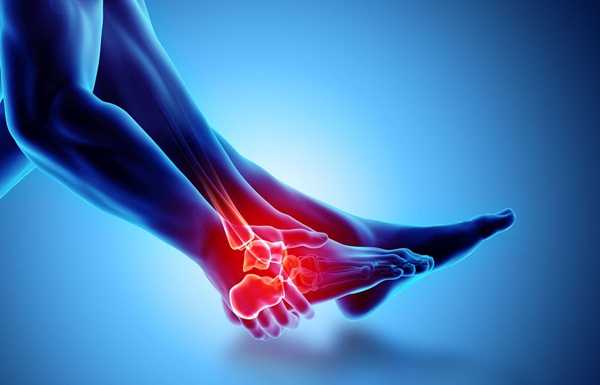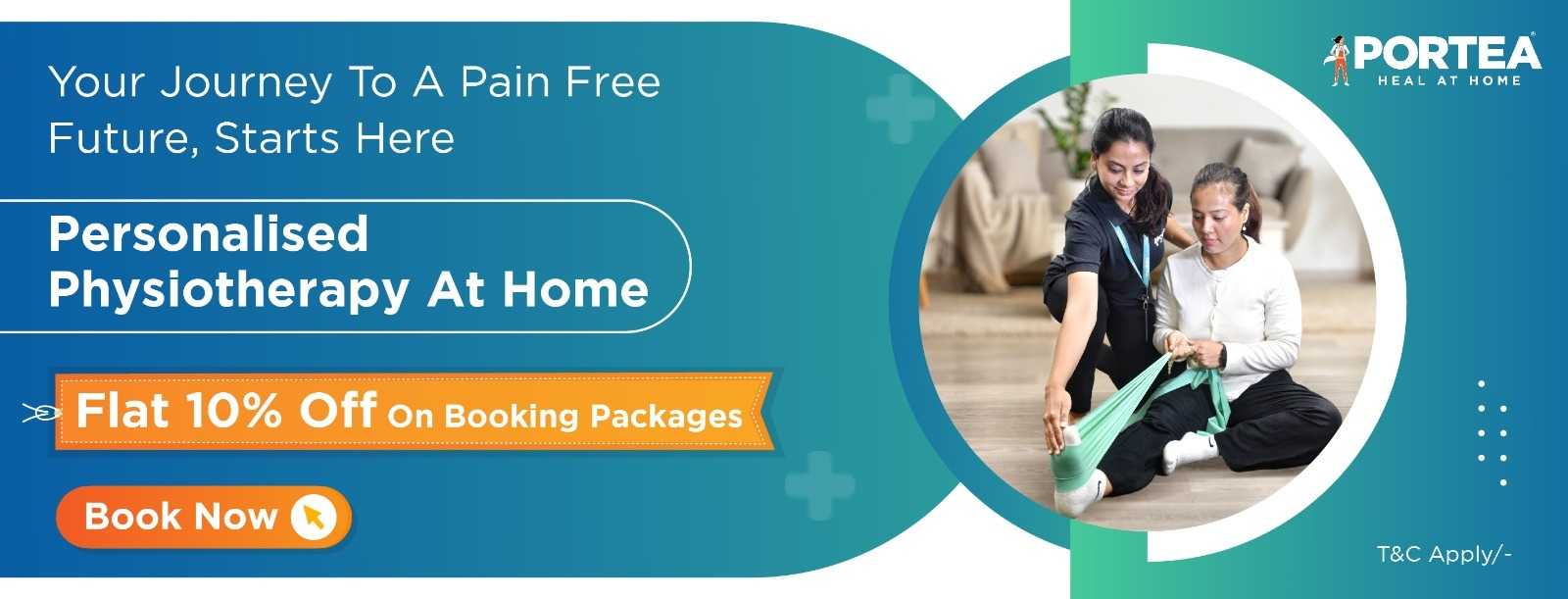
Expert Physiotherapy at Home
Certified physiotherapists visit you at home to provide focused, one-on-one care tailored to your needs. With no travel or waiting rooms, recovery happens in a setting that is comfortable, familiar, and built around your convenience.
Personalised Recovery Programmes
Every treatment plan is designed to suit your condition, goals, and pace. Our physiotherapists follow structured, evolving protocols to ensure consistent progress, with each session aligned to deliver meaningful results.
Trusted Physiotherapists. Real Results.
Our team comprises experienced, background-verified physiotherapists trusted by thousands of families. With a strong focus on safety, reliability, and clinical outcomes, we make recovery at home both effective and reassuring
Patient Testimonials
Portea Physiotherapists for Home Visits
Meet some of our experienced and dedicated healthcare professionals

Dr. Lokesh G
Physiotherapist
Specializations
Experienced in Neurological rehabilitation, Orthopaedic physiotherapy, and Paediatric care
Delivers structured, high-impact treatment plans across neuro, ortho, and paediatrics—ensuring safety, comfort, and measurable recovery at every stage.

Dr. Mohammed Sarwar
Physiotherapist
Specializations
Experienced in Neurological rehabilitation, Adult physiotherapy, and Paediatric care
Combines deep clinical expertise with a compassionate approach, supporting both adults and children through neuro and physical rehabilitation that promotes long-term independence and recovery.

Dr. Nelapati Divya
Physiotherapist
Specializations
Skilled in Orthopaedic rehabilitation, Manual therapy techniques, and Paediatric physiotherapy
Brings a personalised, hands-on approach to healing—combining structural expertise with paediatric sensitivity to restore movement, relieve pain, and improve everyday function.

Dr. Naveen V
Physiotherapist
Specializations
Trained in Pain management, Cardiac and Orthopaedic rehabilitation, Neurological care, and Neural tissue mobilisation
Brings clinical precision and empathy together—designing science-backed recovery protocols for pain relief, nerve mobilisation, and cardio-neuro-ortho rehabilitation across all age groups

Dr. Miloni Savla
Physiotherapist
Specializations
Holds an MPT in Orthopaedics with a focus on Musculoskeletal rehabilitation and strength recovery
Delivers focused, movement-oriented therapy grounded in orthopaedic science—helping patients rebuild strength, restore function, and return to daily life with confidence

introduction for ligament sprain: chronic phase
The chronic phase of a ligament sprain occurs after the acute inflammation subsides, yet lingering symptoms like pain, stiffness, and joint instability remain. This phase often arises due to incomplete healing or improper management during the initial stages. Left unaddressed, chronic ligament sprains can significantly impair mobility and diminish quality of life.
signs and symptoms of ligament sprain: chronic phase
Chronic ligament sprains present with persistent swelling and tenderness in the affected joint. Movement often triggers pain, and many individuals experience a sensation of instability or weakness, increasing the likelihood of recurrent injuries. Over time, stiffness and a reduced range of motion may develop, further restricting daily activities.
causes of ligament sprain: chronic phase
The primary cause of chronic ligament sprains is untreated or poorly managed acute sprains. Recurrent injuries to the same ligament or joint exacerbate the condition, leading to long-term symptoms. Other contributing factors include inadequate rehabilitation, premature return to physical activity, and insufficient rest during the recovery phase.
risks of ligament sprain: chronic phase
Certain groups face a higher risk of developing chronic ligament issues. Athletes and physically active individuals are more susceptible due to repetitive strain on joints. Additional risk factors include age-related wear and tear, obesity, and biomechanical problems such as flat feet or improper gait patterns, which can increase stress on ligaments.
prevention of ligament sprain: chronic phase
Preventing chronic ligament sprains begins with proper management of the acute phase. Full recovery requires professional rehabilitation, rest, and adherence to prescribed exercises. Strengthening programs and the use of supportive braces or appropriate footwear help stabilize the joint and reduce the risk of re-injury.
treatment methods and diagnosis for ligament sprain: chronic phase
Managing chronic ligament sprains involves a comprehensive approach. Diagnosis typically includes a clinical evaluation and imaging studies, such as MRI, to determine the extent of the damage. Treatment options range from pain management and joint bracing to physiotherapy. In severe cases, surgical intervention may be necessary to restore joint stability and function.
how physiotherapy helps in ligament sprain: chronic phase
Physiotherapy plays a crucial role in managing chronic ligament sprains. Customized exercise programs focus on strengthening the affected area and improving proprioception to enhance joint stability. Techniques such as manual therapy and neuromuscular training target stiffness, improve mobility, and prevent further injuries. Physiotherapists also guide individuals through safe and gradual reintroduction to physical activities.
how portea helps with ligament sprain: chronic phase
At Portea, we understand the challenges of recovering from ligament sprains and offer personalized, home-based physiotherapy services tailored to each patient’s unique needs. Our expert physiotherapists design customized rehabilitation programs to restore mobility, reduce pain, and rebuild strength in a safe and supportive environment.
In addition to ligament sprain management, Portea specializes in physiotherapy for post-surgical recovery, arthritis, neuro-rehabilitation, sports injuries, orthopaedic care, elderly care, respiratory disorders, and more. All our services are delivered at your home, ensuring convenience and dedicated care for a smooth recovery.
portea’s other physiotherapy services based on medical conditions
faqs on ligament sprain: chronic phase
1. Can a chronic ligament sprain heal completely?
Recovery depends on severity and treatment. Physiotherapy, strengthening exercises, and joint support can improve function. Severe cases may require surgery, but early intervention and rehabilitation maximize the chances of regaining stability and reducing long-term complications.
2. Is it safe to exercise with a chronic ligament sprain?
Low-impact exercises designed by a physiotherapist help strengthen the joint and improve stability. High-intensity or improper movements may worsen the condition. Gradual progression with professional guidance ensures safe rehabilitation while preventing further damage or recurring injuries.
3. How long does it take to recover from a chronic ligament sprain?
Recovery varies by severity. Mild cases improve in weeks with physiotherapy, while severe cases may take months. Long-term management, including strengthening and stability exercises, helps restore function and prevent recurring injuries, ensuring a gradual and safe return to activity.
4. Are there lifestyle changes that can help with chronic ligament sprains?
Maintaining a healthy weight, strengthening surrounding muscles, wearing supportive footwear, and avoiding excessive joint stress can help. Proper warm-ups, stretching, and ergonomic adjustments during activities reduce strain and improve long-term ligament health and stability.
5. When should I consider surgery for a chronic ligament sprain?
Surgery is recommended when conservative treatments like physiotherapy and bracing fail. If the joint frequently gives out, experiences persistent instability, or limits daily activities, surgical intervention may be necessary to restore proper function and prevent further joint damage.
6. Can chronic ligament sprains lead to arthritis?
Yes, untreated ligament instability can lead to abnormal joint wear and tear, increasing the risk of osteoarthritis. Long-term joint stress causes cartilage deterioration, making early treatment and strengthening exercises essential to prevent degenerative changes and maintain joint health.
7. Does diet play a role in ligament recovery?
A balanced diet rich in protein, collagen, and anti-inflammatory foods supports ligament repair. Nutrients like vitamin C, omega-3s, and antioxidants promote tissue healing, reduce inflammation, and strengthen connective tissues, aiding in long-term recovery and joint stability.
8. Can wearing a brace help a chronic ligament sprain?
Yes, a brace provides joint support, reduces strain, and prevents excessive movement that may worsen the condition. It stabilizes the ligament, allowing safer mobility during daily activities or exercise, and minimizes the risk of further injury or recurring sprains.
9. What role does physiotherapy play in recovery?
Physiotherapy strengthens muscles, improves joint stability, restores mobility, and prevents future injuries. Targeted exercises, manual therapy, and neuromuscular training enhance recovery by reducing stiffness, improving balance, and promoting long-term ligament health and function.
10. How can I prevent a ligament sprain from becoming chronic?
Proper rehabilitation, adherence to treatment, gradual return to activity, and avoiding re-injury are essential. Strengthening exercises, joint stabilization techniques, and professional guidance ensure full recovery, preventing long-term complications and minimizing the risk of future ligament instability.
Doctor Consultation
Nursing
Physiotherapy
Trained Attendant
Elder Care
Mother & Baby Care
Lab Tests
Medical Equipment
Speciality Pharma
Critical Care





